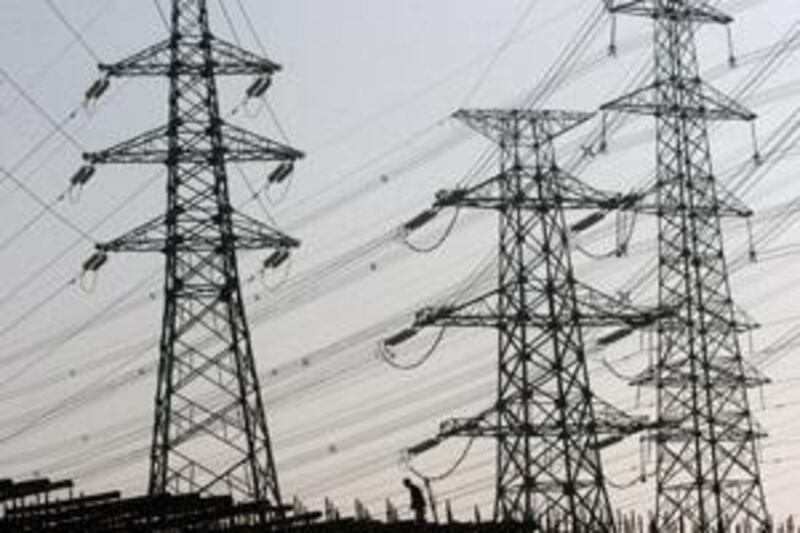A silent killer seems to be stalking a Californian university campus. Since 2000, eight women working in the Literature Building at the University of California, San Diego have developed breast cancer. Two have died. Last month demonstrators marched through the campus demanding action after a report claimed the cancer rate was five times that expected among the population. The university has now commissioned an urgent investigation into the spate of cases, to be published later this month.
Attention is focusing on the effect of electromagnetic fields (EMFs) said to emanate from an elevator equipment room close to where those affected worked. And small wonder: since the late 1970s there have been numerous studies pointing to a link between exposure to EMFs and cancer. But epidemiologists point out that there have also been numerous studies pointing to no link at all. So what should we make of this apparent cancer cluster? Is it an example of what Ian Fleming's villain Auric Goldfinger tells James Bond - that "Once is happenstance, twice is coincidence, the third time it's enemy action"?
Scientists have long cautioned against reading too much into clusters, pointing out that most of us underestimate what simple randomness can produce. If asked to write down half a dozen random numbers between 1 and 50, we tend to go for a fairly even spread, avoiding "clusters" of consecutive numbers. Yet probability theory shows that if chosen truly randomly, around half of all such sets of six random numbers will feature at least one consecutive pair, like 15 and 16. If you don't believe it, check out the past draws of a national lottery, such as the UK Lotto.
Randomness can also produce clustering over time and space. Suppose cases of some disease rear their heads on average 12 times a year. It seems reasonable to expect that a typical year will thus feature around one case per month. In fact, probability theory shows that so even a spread will occur on average just once every 164,000 years. The vast majority of years will have clusters of two or more cases in some months and none at all in others.
Yet can mere happenstance explain a cluster of eight cancer cases at UCSD? According to a report by one university researcher, the chances of getting so many cases by fluke alone are less than 1 in 300. In the face of such odds, it makes sense to consider the alternatives. But according to Professor Geoffrey Kabat, of the Albert Einstein College of Medicine, New York, it's a mistake to put headline-grabbing health risks like EMFs at the top of the list.
Prof Kabat is a cancer epidemiologist and the author of Hyping Health Risks (Columbia University Press), a fascinating new study of the facts and fallacies behind health scares. He certainly doesn't believe they should be dismissed out of hand: even experts should be willing to concede they aren't always right. Instead, he emphasises the importance of some basic facts when looking for explanations of scares such as cancer clusters.
First, cancer can take years to emerge following exposure to a causative agent. In the case of breast cancer, the disease may have been initiated as long as 20 years before diagnosis. As such, the risk factors found to be present at the time the women are diagnosed may well be irrelevant. As for the most likely culprit, Prof Kabat points out that decades of research have highlighted five key risk factors: family history of the disease, age at menarche and at menopause, age at first full-term birth and number of children.
That's not to say other factors such as diet and socioeconomic status are not involved, just that they are less important. Of these other factors, environmental pollution in general and EMFs in particular are at the low end of the spectrum of plausibility. Since the late 1970s, their link with cancers has been examined many times, with mixed results. Over the past decade or so, however, large studies involving hundreds of people and careful measurements of their exposure to EMFs have failed to find any compelling evidence for a link with cancer. No one study can completely rule out the possibility of a link, but taken together they do suggest the link is at best weak - and certainly less important than the "big five".
It's a conclusion buttressed by the fact that no plausible mechanism has been found to explain how breast cancer might be triggered by the weak EMFs encountered in daily life. In contrast, the big five are all linked to levels of oestrogen - a hormone known to promote cancerous cell growth. Not surprisingly, Prof Kabat thinks it's unlikely that the forthcoming UCSD report will demonstrate that EMFs were the cause of the cancer cluster. Sadly, it's equally unlikely that this will placate those demanding action: conspiracy theorists are already claiming that the scientist in charge of the study is too closely linked to the electricity industry, which has an interest in quelling concern over EMFs.
Ultimately, what's needed are better ways of assessing health scares, and weeding out the statistical dross which so often captures headlines. They do exist: known as bayesian methods, they take explicit account of both the size of studies - giving more weight to large ones - and the plausibility of the claim being made. Had bayesian methods been used, it's doubtful the supposed link between EMFs and cancer would have ever seen the light of day. As it is, the cancer scare at UCSD will most likely continue until action is taken to shield those "at risk" from a threat that doesn't exist.
Robert Matthews is Visiting Reader in Science at Aston University, Birmingham, England






